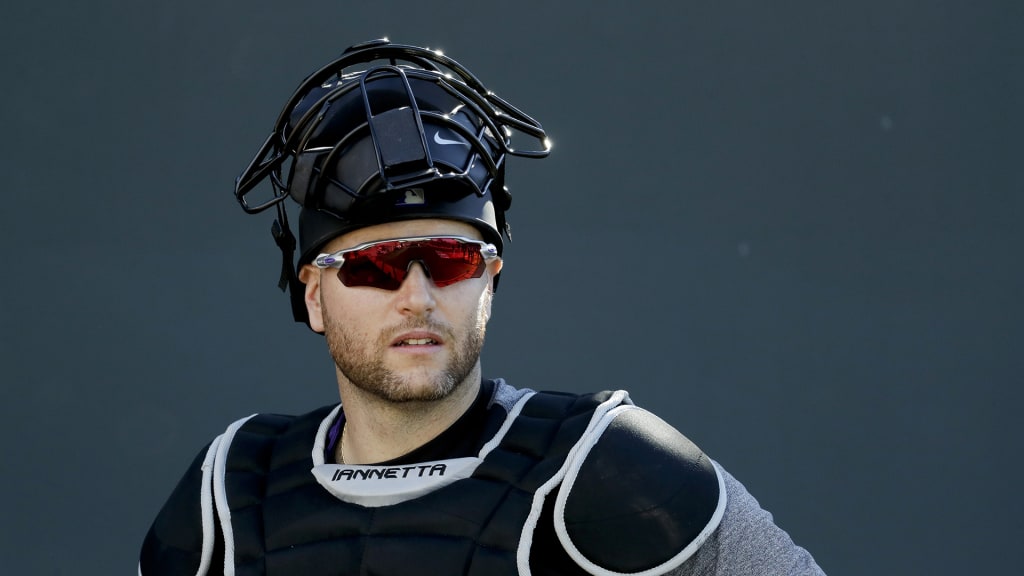
SCOTTSDALE, Ariz. -- The Rockies head into the final Cactus League week with essentially three catchers for two spots. But beyond the difficult roster decision is this nagging question: Do they have enough catching for 162 games?
The need to combine credible or better defense with passible offense vexes the Rockies, as it does most teams. Just five NL catchers exceeded 100 starts, and six eclipsed 100 defensive appearances. In many cases, teams had co-starters rather than a starter-backup system. But it’s hard enough finding one solid catcher, much less two.
That brings us back to the Rockies.
First, some perspective:
Is it a problem for the Rockies' offense that their 67 weighted runs created-plus, per Fangraphs which ranked 25th in the Majors last year? Sure. But guess which team’s catcher finished last, in wRC+: the World Series champion Red Sox at 44. And Rockies catchers adeptly handled a starting rotation that was a key reason for a postseason trip.
Then there's veteran Chris Iannetta, the main guy last year at 79 starts and 83 games played, left-handed hitting Tony Wolters and right-handed hitting onetime prospect Tom Murphy, who is out of Minor League options and would have to clear waivers to be sent to the Minors.
Like most of baseball, the Rockies will spend the last days of Spring Training combing other camps to see if they can scrape up more catching. They did it at the end of spring in 2017, acquiring Ryan Hanigan, and made in-season moves for Jonathan Lucroy in ’17 and Drew Butera in 2018.
That said, here’s a look at the candidates currently on the roster:
• Iannetta has struggled offensively this spring, after an up-and-down .224/.345/.385 slash line last season. He also turns 36 on April 8.
But with a $4.150 million salary (plus a $750,000 buyout on a $4.25 million 2020 option), Spring Training isn’t a tryout, and Iannetta ushered breakout lefty starting pitcher Kyle Freeland to a 2.86 ERA in their 32 starts together last year. So Rockies manager Bud Black believes rationing playing time can maximize Iannetta’s impact.
“I don’t like to put a hard percentage or a hard number of games, but it’s a 2-3 times a week type situation,” Black said. “Four? Who knows? We’ve got to see how he’s doing physically and performance-wise.”
• Wolters appears recovered from the stomach flu and an upper-respiratory illness that halted his spring action. The Rockies know he meshes with pitchers -- German Marquez had a 3.02 ERA in 23 games throwing to him, for example.
But for the Rockies to lessen the load on Iannetta, Wolters needs to improve on last season’s .170 batting average -- and he’s had less Cactus League time to hone a swing that at its best can be used for a few hits and bat-control situations.
“He can defend,” Black said. “With him, it’s just continued education with game-calling, and with the bat, just staying committed and convicted to an approach and a swing that he can repeat. Tony self-admitted over the last couple of years that he changes a little bit all the time.
“It’s one thing to be Cal Ripken and change your stance from game to game, but with Tony, being a couple years’ service-time player, he’s got to get his approach, get his swing. Eventually, it will get to where it needs to be.”
• Murphy, a right-handed hitter with power potential, entered Monday with a .231 spring batting average and three home runs. His defense, a concern since injuries in the Minors cut into his physical tools, also has received positive reviews internally. But when he received opportunity last season, he struck out 44 times in 93 at-bats and had some late-game defensive struggles.
“'Murf’ has made great strides on the defensive side … he’s a much better blocker, his receiving has improved, arm strength is solid, and I really like how he calls a game,” Black said. “The offensive side has been a little bit up and down.”
Carrying three catchers is “unlikely,” Black said. Ideally, either Wolters or Murphy could justify receiving the higher number of the starts. Problem is their histories don’t make it easy, and the Cactus League doesn’t offer enough of a sample for one to prove it.
“I don’t know if you would call it a platoon or split time,” Black said. “How about this? We’re going to use them both, whoever the two catchers are.”
